
|
It brightened up to 3.7 mag and became a naked eye comet in mid January (Jan. 13, Marek Biely). It is bright as 6.3 mag still now (Mar. 20, Maik Meyer). It kept brightening even after the perihelion passage. However, it will be getting fainter gradually after this. In the Northern Hemisphere, it keeps observable in good condition after this until the comet fades out. It is not observable in the Southern Hemisphere.
Date(TT) R.A. (2000) Decl. Delta r Elong. m1 Best Time(A, h)
Mar. 21 1 23.72 61 53.1 1.628 1.490 63 6.4 19:35 (147,-31)
Mar. 28 1 23.36 64 17.0 1.725 1.543 62 6.8 19:24 (149,-34)
|

|
Now it is bright as 9.5 mag (Mar. 22, Marco Goiato). In the Southern Hemisphere, it will be getting higher gradually after this. In the Northern Hemisphere, it keeps extremely low and hard to observe until June. It will be observable in good condition after June while the comet will be fading gradually.
Date(TT) R.A. (2000) Decl. Delta r Elong. m1 Best Time(A, h)
Mar. 21 21 2.09 -19 14.7 1.830 1.370 47 9.1 4:38 (274, 29)
Mar. 28 21 27.10 -17 38.0 1.805 1.362 48 8.9 4:45 (271, 30)
|
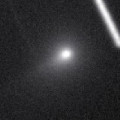
|
Bright new comet. Now it is so bright as 9.5 mag (Mar. 18, Sandor Szabo). In the Northern Hemisphere, it keeps locating extremely low and hard to observe. It will be getting higher gradually after May, but the comet will be fainter than 14 mag. It is not observable after this in the Southern Hemisphere.
Date(TT) R.A. (2000) Decl. Delta r Elong. m1 Best Time(A, h)
Mar. 21 1 10.46 12 34.8 1.619 0.785 21 9.9 19:35 ( 98,-11)
Mar. 28 1 15.00 19 37.2 1.707 0.852 20 10.4 19:24 (103,-18)
|

|
The spacecraft observed it brightened rapidly from 9 mag up to 2 mag when passing near by the sun. The nucleus has been already disintegrated, but the remnant was visible bright also on the earth (Mar. 7, Juan Jose Gonzalez). Now it is fainter than 10.3 mag (Mar. 17, Marek Biely). It locates high in the evening sky in the Northern Hemisphere. It is not observable in the Southern Hemisphere.
Date(TT) R.A. (2000) Decl. Delta r Elong. m1 Best Time(A, h)
Mar. 21 2 20.39 44 16.8 1.198 1.017 54 11.4 19:35 (134,-15)
Mar. 28 3 2.27 48 10.6 1.381 1.177 56 12.4 19:24 (140,-14)
|
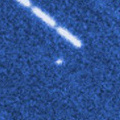
|
Now it is 12.8 mag (Mar. 21, Michael Mattiazzo). It will brighten up to 10.5 mag in 2015 spring. But the condition of this apparition is bad. It is already unobservable in the Northern Hemisphere. It will be unobservable in mid March also in the Southern Hemisphere. In the Northern Hemisphere, it will be observable after 2015 autumn while the comet will be fading.
Date(TT) R.A. (2000) Decl. Delta r Elong. m1 Best Time(A, h)
Mar. 21 1 13.60 -9 2.5 2.456 1.563 20 12.3 19:35 ( 81, 2)
Mar. 28 1 31.32 -6 2.6 2.437 1.526 18 12.0 19:24 ( 83, 0)
|
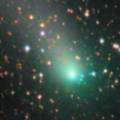
|
The brightness evolution has slowed down before the perihelion passage, and it faded down to 11.6 mag in late October (Oct. 26, Todd Augustyniak). However, an outburst occured around Nov. 10-12, and it brightened by 2 mag. Now it is fading. It has already faded down to 14.7 mag (Mar. 18, Sandor Szabo). In the Northern Hemisphere, it will be observable in excellent condition after this while the comet will be fading. It is observable in the morning low sky until early April also in the Southern Hemisphere.
Date(TT) R.A. (2000) Decl. Delta r Elong. m1 Best Time(A, h)
Mar. 21 17 34.64 38 18.0 2.147 2.443 94 12.0 4:38 (193, 15)
Mar. 28 17 20.28 42 36.5 2.142 2.514 99 12.2 4:45 (183, 12)
|
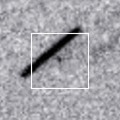
|
It will brighten up to 11 mag in spring. But the condition is bad in this apparition. In the Southern Hemisphere, it will become observable in the morning extremely low sky after late April. It will not be observable until late July in the Northern Hemisphere.
Date(TT) R.A. (2000) Decl. Delta r Elong. m1 Best Time(A, h)
Mar. 21 23 1.14 -8 59.7 2.299 1.378 17 12.5 4:38 (282, -1)
Mar. 28 23 24.35 -7 42.9 2.304 1.393 18 12.1 4:45 (279, 0)
|
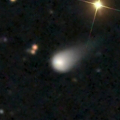
|
It brightened up to 13.6 mag until the end of 2014, brighter than originally expected (Dec. 19, Chris Wyatt). It is expected to brighten up to 4 mag from autumn to winter in 2015. Now it is not observable. In the Southern Hemisphere, it will be observable in good condition again after late March. In the Northern Hemisphere, it is hardly observable until 2015 December.
Date(TT) R.A. (2000) Decl. Delta r Elong. m1 Best Time(A, h)
Mar. 21 23 5.30 -21 46.7 4.477 3.603 25 12.3 4:38 (293, 6)
Mar. 28 23 10.10 -21 40.2 4.347 3.524 30 12.2 4:45 (289, 11)
|
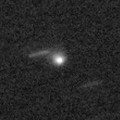
|
It will approach to the sun down to 0.3 a.u. in 2015 July, and it is expected to be bright. It brightened up to 15.6 mag in January (Jan. 13, Yasukazu Ikari). Hard to observe for a while after this. In the Southern Hemisphere, it will be observable after mid July, and keeps observable while the comet will be fading gradually. It will not be observable after this in the Northern Hemisphere.
Date(TT) R.A. (2000) Decl. Delta r Elong. m1 Best Time(A, h)
Mar. 21 0 4.46 -7 32.4 3.199 2.216 7 13.5 19:35 ( 72,-13)
Mar. 28 0 13.97 -5 48.8 3.089 2.109 8 13.2 4:45 (285,-11)
|
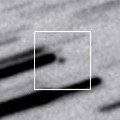
|
It passes the perihelion on Mar. 15, and brightens up to 13 mag. But it is not observable until it becomes fainter than 18 mag.
Date(TT) R.A. (2000) Decl. Delta r Elong. m1 Best Time(A, h)
Mar. 21 23 21.95 0 3.4 1.193 0.265 9 13.3 4:38 (277,-10)
Mar. 28 23 50.29 6 35.2 1.417 0.462 9 14.4 4:45 (271,-13)
|
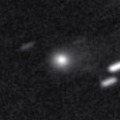
|
Now it is 14.3 mag (Mar. 1, Taras Prystavski). In 2015, it keeps 13-14 mag and will be observable in good condition for a long time.
Date(TT) R.A. (2000) Decl. Delta r Elong. m1 Best Time(A, h)
Mar. 21 18 47.74 -11 59.3 3.524 3.460 78 13.6 4:38 (242, 51)
Mar. 28 18 55.03 -11 35.5 3.431 3.458 83 13.6 4:45 (234, 56)
|

|
Now it is 15.5 mag (Mar. 1, Taras Prystavski). It is expected to brighten rapidly and will be observable in good condition at 13 mag from March to May.
Date(TT) R.A. (2000) Decl. Delta r Elong. m1 Best Time(A, h)
Mar. 21 16 55.93 -19 35.3 0.529 1.242 104 14.0 4:38 (201, 74)
Mar. 28 17 32.00 -19 32.8 0.502 1.216 103 13.7 4:45 (203, 73)
|

|
Now it is 15 mag (Feb. 26, Richard Miles). It is getting higher gradually in the morning sky.
Date(TT) R.A. (2000) Decl. Delta r Elong. m1 Best Time(A, h)
Mar. 21 17 54.25 -31 5.6 5.958 6.059 91 13.7 4:38 (263, 72)
Mar. 28 17 56.10 -31 11.8 5.845 6.057 97 13.7 4:45 (255, 78)
|

|
It brightened up to 6.9 mag in autumn (Oct. 17, Marco Goiato). Now it is fading. But it is bright as 12.6 mag still now (Feb. 9, Chris Wyatt). In the Southern Hemisphere, it is getting lower and it will be unobservable temporarily in March. But it will be observable in good condition again after April. It will be observable again in mid June also in the Northern Hemisphere.
Date(TT) R.A. (2000) Decl. Delta r Elong. m1 Best Time(A, h)
Mar. 21 0 31.60 -19 1.9 4.026 3.113 20 13.8 19:35 ( 66, 0)
Mar. 28 0 35.00 -18 26.0 4.101 3.192 21 13.9 19:24 ( 65, -3)
|
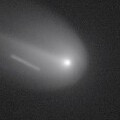
|
It brightened very rapidly in outburst up to 8.8 mag in mid December (Dec. 19, Marco Goiato). Then it faded down to 10.7 mag (Jan. 14, Chris Wyatt). However, it brightened in outburst again on Jan. 16, and brightened up to 7.0 mag (Jan. 17, Maik Meyer). Now it is 11.6 mag and diffuse (Mar. 10, J.P.Navarro Pina). In the Northern Hemisphere, it keeps high within March. In the Southern Hemisphere, it keeps locating extremely low after this.
Date(TT) R.A. (2000) Decl. Delta r Elong. m1 Best Time(A, h)
Mar. 21 3 10.10 22 56.3 1.915 1.515 51 13.9 19:35 (124, 6)
Mar. 28 3 34.01 24 26.8 2.017 1.581 50 14.5 19:24 (126, 6)
|
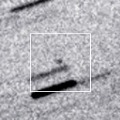
|
It was observed at 16.0 mag in December (Dec. 22, Ken-ichi Kadota). It must have brightened up to 11 mag from January to February, but no observations have been reported. In the Southern Hemisphere, it is observable in the morning sky after this while the comet will be fading. It is hardly observable in the Northern Hemisphere.
Date(TT) R.A. (2000) Decl. Delta r Elong. m1 Best Time(A, h)
Mar. 21 22 14.68 -19 32.2 2.114 1.377 32 14.1 4:38 (284, 14)
Mar. 28 22 37.80 -18 38.8 2.129 1.415 33 14.6 4:45 (282, 16)
|
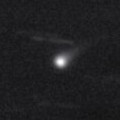
|
Brightening very rapidly. Now it is so bright as 14.6 mag and visible visually (Mar. 17, Sandor Szabo). It keeps observable at 14-15 mag in good condition from winter to spring.
Date(TT) R.A. (2000) Decl. Delta r Elong. m1 Best Time(A, h)
Mar. 21 8 45.89 10 9.0 2.756 3.490 130 14.5 20:51 (180, 45)
Mar. 28 8 45.79 10 1.7 2.823 3.480 123 14.4 20:24 (180, 45)
|

|
Now it is 13.5 mag (Mar. 14, Chris Wyatt). It is fainter than originally predicted by 2 mag. In the Northern Hemisphere, it keeps observable at 14 mag in excellent condition from 2014 summer to 2015 spring. It locates somewhat low in the Southern Hemisphere.
Date(TT) R.A. (2000) Decl. Delta r Elong. m1 Best Time(A, h)
Mar. 21 11 24.09 20 35.3 1.466 2.417 157 14.4 23:29 (180, 35)
Mar. 28 11 19.58 20 22.3 1.524 2.450 151 14.6 22:57 (180, 35)
|

|
It brightened up to 10.6 mag from autumn to winter (Nov. 29, Seiichi Yoshida). Now it is 12.4 mag (Feb. 19, Taras Prystavski). It will be fading graudually after this. But it keeps observable for a long time until the comet fades out.
Date(TT) R.A. (2000) Decl. Delta r Elong. m1 Best Time(A, h)
Mar. 21 17 34.98 -14 33.7 1.831 2.173 95 14.5 4:38 (220, 65)
Mar. 28 17 38.87 -14 34.6 1.816 2.244 101 14.8 4:45 (203, 68)
|
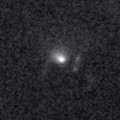
|
Now it is 15.2 mag and visible visually (Mar. 18, Sandor Szabo). It will brighten up to 11 mag in 2015 autumn. In this apparition, it is observable until the highlight while the comet is brightening.
Date(TT) R.A. (2000) Decl. Delta r Elong. m1 Best Time(A, h)
Mar. 21 13 4.06 0 53.3 1.565 2.537 163 14.8 1:13 (180, 54)
Mar. 28 12 58.77 1 42.6 1.505 2.495 170 14.5 0:40 (180, 53)
|

|
It brightened up to 11-12 mag in 2012. It has already faded down to 16.0 mag (Feb. 14, Taras Prystavski). It keeps observable at 15 mag in good condition until 2015 summer.
Date(TT) R.A. (2000) Decl. Delta r Elong. m1 Best Time(A, h)
Mar. 21 11 26.72 -8 1.1 8.196 9.174 168 15.2 23:31 (180, 63)
Mar. 28 11 22.54 -7 35.7 8.250 9.212 163 15.2 23:00 (180, 63)
|

|
Very far object. However, outburst occured on Feb. 20, and now it brightened up to 15.3 mag (Feb. 28, Taras Prystavski). It is reported so bright visually as 12.5 mag (Mar. 22, Marco Goiato). It locates high in the Southern Hemisphere. But it locates somewhat low in the Northern Hemisphere.
Date(TT) R.A. (2000) Decl. Delta r Elong. m1 Best Time(A, h)
Mar. 21 12 13.17 -23 24.9 8.231 9.151 156 15.2 0:22 (180, 79)
Mar. 28 12 11.22 -23 11.1 8.210 9.150 159 15.2 23:49 (180, 78)
|

|
Now it is 15.3 mag (Jan. 7, Taras Prystavski). It keeps 15 mag for a long time from 2014 to 2015. It is observable in excellent condition in 2014 in the Southern Hemisphere, or in 2015 in the Northern Hemisphere. It becomes unobservable temporarily from March to May.
Date(TT) R.A. (2000) Decl. Delta r Elong. m1 Best Time(A, h)
Mar. 21 0 56.83 2 14.1 4.839 3.883 14 15.3 19:35 ( 87, -8)
Mar. 28 1 2.38 3 48.1 4.865 3.884 9 15.3 19:24 ( 87,-11)
|
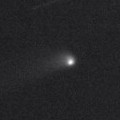
|
Now it is 15.8 mag (Feb. 22, Taras Prystavski). It will brighten up to 14 mag from 2015 to 2016. In the Southern Hemisphere, it becomes unobservable temporarily from April to May, but it will be observable in good condition again after June. It will be observable in good condition after July also in the Northern Hemisphere.
Date(TT) R.A. (2000) Decl. Delta r Elong. m1 Best Time(A, h)
Mar. 21 2 48.36 -6 24.5 5.095 4.413 42 15.5 19:35 ( 96, 20)
Mar. 28 2 49.38 -5 13.4 5.152 4.395 36 15.5 19:24 ( 95, 16)
|

|
It brightened rapidly. Now it is 16.1 mag, much brighter than origianlly predicted (Feb. 14, Taras Prystavski). It keeps 15 mag in March.
Date(TT) R.A. (2000) Decl. Delta r Elong. m1 Best Time(A, h)
Mar. 21 16 4.61 -23 56.6 0.940 1.642 116 15.5 4:13 (180, 79)
Mar. 28 16 12.97 -25 51.9 0.919 1.666 120 15.7 3:54 (180, 81)
|

|
Now it is 14.7 mag (Mar. 2, Taras Prystavski). It is observable at 15-16 mag in good condition in 2015.
Date(TT) R.A. (2000) Decl. Delta r Elong. m1 Best Time(A, h)
Mar. 21 19 0.69 -17 39.5 7.696 7.507 75 15.6 4:38 (252, 52)
Mar. 28 19 0.47 -17 55.4 7.603 7.536 82 15.6 4:45 (244, 59)
|
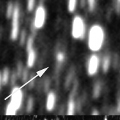
|
Now it is 16.7 mag (Sept. 23, Taras Prystavski). Distant object, but it keeps observable at 14-15 mag for a long time from 2015 to 2016.
Date(TT) R.A. (2000) Decl. Delta r Elong. m1 Best Time(A, h)
Mar. 21 20 54.04 -4 28.0 6.421 5.781 46 15.7 4:38 (259, 22)
Mar. 28 20 59.07 -4 4.4 6.317 5.755 51 15.6 4:45 (254, 28)
|
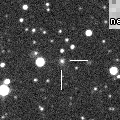
|
Now it is 15.4 mag and visible visually (Mar. 18, Sandor Szabo). In the Northern Hemisphere, it keeps 15-16 mag and observable in excellent condition for a long time until early summer in 2015. It locates somewhat low in the Southern Hemisphere.
Date(TT) R.A. (2000) Decl. Delta r Elong. m1 Best Time(A, h)
Mar. 21 13 18.25 34 44.7 2.969 3.792 140 15.7 1:27 (180, 20)
Mar. 28 13 12.82 34 29.1 2.988 3.817 141 15.7 0:54 (180, 21)
|

|
First return of a comet re-discovered after 112-year blank in 2008. It brightened up to 12 mag in 2008. It is expected to brighten up to 15 mag from spring to summer in this apparition. It keeps locating low in the morning sky for a while.
Date(TT) R.A. (2000) Decl. Delta r Elong. m1 Best Time(A, h)
Mar. 21 21 29.68 -5 2.9 2.306 1.636 37 16.0 4:38 (265, 15)
Mar. 28 21 50.05 -3 38.9 2.257 1.613 39 15.9 4:45 (262, 17)
|
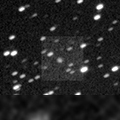
|
Now it is 14.8 mag and visible visually (Mar. 18, Sandor Szabo). It will pass close to the earth from spring to summer in 2016, and it is expected to be observable at 6-7 mag in good condition. In the Northern Hemispehre, it keeps observable in good condition until 2015 spring when the comet will brighten up to 15 mag. In the Southern Hemisphere, it keeps low for a long time until 2016 spring.
Date(TT) R.A. (2000) Decl. Delta r Elong. m1 Best Time(A, h)
Mar. 21 4 45.44 34 6.3 5.128 4.961 74 16.0 19:35 (147, 11)
Mar. 28 4 44.85 33 53.6 5.183 4.895 67 16.0 19:24 (143, 9)
|
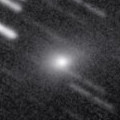
|
Now it is bright as 13.8 mag (Feb. 15, Jakub Cerny). It will be fading, and getting lower gradually after this. It locates somewhat low in the Southern Hemisphere.
Date(TT) R.A. (2000) Decl. Delta r Elong. m1 Best Time(A, h)
Mar. 21 6 37.98 19 48.1 2.184 2.540 99 16.1 19:35 (166, 34)
Mar. 28 6 44.96 19 23.4 2.280 2.549 93 16.2 19:24 (163, 34)
|

|
Now it is 15.8 mag (Jan. 11, Y. Sugiyama). It keeps observable at 15-16 mag for a long time from 2015 to 2016. In the Northern Hemisphere, it becomes unobservable temporarily from April to June, but it will be observable in good condition after July. It is not observable after this in the Southern Hemisphere.
Date(TT) R.A. (2000) Decl. Delta r Elong. m1 Best Time(A, h)
Mar. 21 3 7.07 32 46.4 5.911 5.401 54 16.2 19:35 (130, -1)
Mar. 28 3 10.86 33 25.9 5.982 5.387 49 16.2 19:24 (129, -4)
|
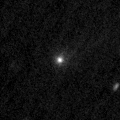
|
Now it is 15.2 mag and visible visually (Mar. 18, Sandor Szabo). It keeps observable in good condition after this, but it will be fading gradually.
Date(TT) R.A. (2000) Decl. Delta r Elong. m1 Best Time(A, h)
Mar. 21 12 2.98 10 22.0 1.351 2.338 169 16.2 0:12 (180, 45)
Mar. 28 11 58.21 10 57.4 1.387 2.365 164 16.3 23:35 (180, 44)
|

|
Now it is 17.6 mag (Feb. 23, Mitsunori Tsumura). It will brighten up to 13 mag in 2016. In the Northern Hemisphere, it will be observable in excellent condition in this winter. It locates somewhat low in the Southern Hemisphere. It is fainter than this ephemeris recently.
Date(TT) R.A. (2000) Decl. Delta r Elong. m1 Best Time(A, h)
Mar. 21 5 54.14 27 14.5 2.764 2.920 88 16.2 19:35 (157, 24)
Mar. 28 6 0.12 27 7.3 2.836 2.894 83 16.2 19:24 (155, 23)
|
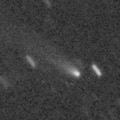
|
Now it is 15.3 mag (Feb. 23, Mitsunori Tsumura). It keeps observable in good condition after this in the Northern Hemisphere, but it will be fading gradually. It locates low in the Southern Hemisphere.
Date(TT) R.A. (2000) Decl. Delta r Elong. m1 Best Time(A, h)
Mar. 21 4 30.07 28 35.7 1.543 1.533 70 16.2 19:35 (141, 14)
Mar. 28 4 55.32 29 18.5 1.619 1.571 69 16.5 19:24 (143, 14)
|
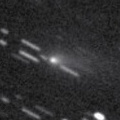
|
It brightened up to 2 mag by unusual major outburst in 2007. It brightened up to 12.6 mag in this apparition (June 25, Taras Prystavski). It faded down to 17-18 mag, but it suddenly brightened in outburst on Jan. 26, and brightened up to 13.2 mag (Jan. 29, Uwe Pilz). Then it is fading rapidly. It has already faded down to 17.2 mag (Feb. 27, A. Diepvens). In the Northern Hemisphere, it keeps observable in good condition. In the Southern Hemisphere, it keeps extremely low.
Date(TT) R.A. (2000) Decl. Delta r Elong. m1 Best Time(A, h)
Mar. 21 4 52.10 37 36.1 3.300 3.221 76 16.2 19:35 (150, 9)
Mar. 28 5 1.09 37 10.3 3.422 3.251 71 16.6 19:24 (148, 8)
|
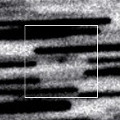
|
Now it is 19.2 mag (Feb. 21, Jean-Francois Soulier). It is expected to brighten up to 15 mag in summer, and will be observable in excellent condition. But it is fainter than this ephemeris.
Date(TT) R.A. (2000) Decl. Delta r Elong. m1 Best Time(A, h)
Mar. 21 20 7.56 -17 42.7 2.109 1.821 59 16.6 4:38 (265, 39)
Mar. 28 20 25.92 -16 38.0 2.039 1.802 62 16.5 4:45 (261, 42)
|
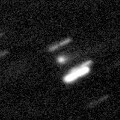
|
Now it is 16.1 mag (Feb. 22, Taras Prystavski). It keeps observable at 16-17 mag in good condition for a while.
Date(TT) R.A. (2000) Decl. Delta r Elong. m1 Best Time(A, h)
Mar. 21 7 53.05 14 5.2 3.586 4.141 117 16.7 19:59 (180, 41)
Mar. 28 7 54.32 14 8.4 3.686 4.148 110 16.8 19:33 (180, 41)
|
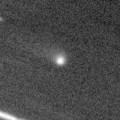
|
Now it is 16.1 mag (Feb. 15, Taras Prystavski). It keeps 17-18 mag for a long time from 2014 to 2016.
Date(TT) R.A. (2000) Decl. Delta r Elong. m1 Best Time(A, h)
Mar. 21 12 1.13 -23 10.8 4.430 5.360 156 16.7 0:11 (180, 78)
Mar. 28 11 50.80 -22 38.4 4.424 5.365 158 16.7 23:27 (180, 78)
|
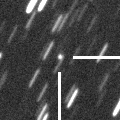
|
Brightened rapidly. Now it is bright as 15.8 mag and visible visually (Mar. 18, Sandor Szabo). It is observable in excellent condition in the Northern Hemisphere. But it will be fading after this, and will be fainter than 18 mag in May. It is not observable in the Southern Hemisphere.
Date(TT) R.A. (2000) Decl. Delta r Elong. m1 Best Time(A, h)
Mar. 21 6 37.96 53 40.5 1.604 1.971 95 16.8 19:35 (173, 1)
Mar. 28 6 57.76 52 48.8 1.686 2.001 92 16.9 19:24 (173, 2)
|

|
Now it is 16.3 mag (Feb. 27, E. Bryssinck). It keeps 13 mag for a long time from 2015 to 2016, and will be observable in excellent condition in the Northern Hemisphere. In the Southern Hemisphere, it is observable only until mid 2015 March.
Date(TT) R.A. (2000) Decl. Delta r Elong. m1 Best Time(A, h)
Mar. 21 3 43.86 26 6.3 4.843 4.430 59 16.9 19:35 (131, 9)
Mar. 28 3 46.47 26 50.8 4.892 4.379 53 16.9 19:24 (129, 6)
|
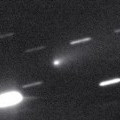
|
Now it is 14.4 mag (Feb. 15, Taras Prystavski). It keeps observable for a long time after this while the comet will be fading gradually.
Date(TT) R.A. (2000) Decl. Delta r Elong. m1 Best Time(A, h)
Mar. 21 9 8.19 6 42.8 2.259 3.061 136 16.9 21:14 (180, 48)
Mar. 28 9 7.35 7 16.5 2.368 3.102 129 17.1 20:45 (180, 48)
|

|
It brightened up to 6.5 mag in September (Sept. 21, Marco Goiato). Now it is fading rapidly. It has already faded, fainter than 17.7 mag (Feb. 15, Taras Prystavski).
Date(TT) R.A. (2000) Decl. Delta r Elong. m1 Best Time(A, h)
Mar. 21 14 45.99 20 40.2 2.140 2.925 134 17.0 2:55 (180, 34)
Mar. 28 14 29.47 22 53.4 2.177 3.013 140 17.2 2:11 (180, 32)
|
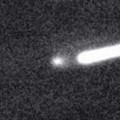
|
It brightened up to 15.5 mag from autumn to winter (Nov. 25, Taras Prystavski). Now it is fading. It has already faded down to 16.6 mag (Feb. 15, Taras Prystavski). It keeps observable in good condition for a while.
Date(TT) R.A. (2000) Decl. Delta r Elong. m1 Best Time(A, h)
Mar. 21 17 40.43 -10 16.0 1.880 2.198 94 17.0 4:38 (217, 61)
Mar. 28 17 47.06 -9 55.7 1.838 2.235 99 17.1 4:45 (204, 63)
|

|
Now it is 17.7 mag (Feb. 17, K. Hills). It keeps observable at 17 mag from spring to summer. It locates somewhat low in the Northern Hemisphere.
Date(TT) R.A. (2000) Decl. Delta r Elong. m1 Best Time(A, h)
Mar. 21 17 9.79 -29 3.4 2.800 3.143 100 17.2 4:38 (238, 80)
Mar. 28 17 14.01 -29 5.4 2.708 3.144 106 17.1 4:45 (201, 84)
|
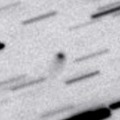
|
Now it is 18.0 mag (Feb. 27, W. Hasubick). It keeps observable at 17-18 mag for a long time from 2013 to 2016. It keeps locating high in the Northern Hemisphere. It keeps locating very low in the Southern Hemipshere.
Date(TT) R.A. (2000) Decl. Delta r Elong. m1 Best Time(A, h)
Mar. 21 17 17.24 57 43.2 6.449 6.622 95 17.3 4:38 (186, -3)
Mar. 28 17 11.81 59 6.3 6.438 6.633 96 17.3 4:45 (181, -4)
|

|
Now it is 17.7 mag (Jan. 20, Taras Prystavski). It was observed at 17 mag in 2014 summer. In the Northern Hemisphere, it is observable at 17.5 mag in excellent condition also in 2015. It is not observable in the Southern Hemisphere.
Date(TT) R.A. (2000) Decl. Delta r Elong. m1 Best Time(A, h)
Mar. 21 20 52.08 39 7.6 4.444 4.006 57 17.3 4:38 (225, -6)
Mar. 28 21 2.26 40 14.0 4.443 4.023 59 17.3 4:45 (221, -3)
|

|
Now it is 17.5 mag (Feb. 19, W. Hasubick). It was observed around 17-18 mag in early 2014. It will be observable around 17-18 mag again from 2014 autumn to 2015 spring, in excellent condition in the Northern Hemisphere. It is not observable in the Southern Hemisphere.
Date(TT) R.A. (2000) Decl. Delta r Elong. m1 Best Time(A, h)
Mar. 21 9 59.69 54 28.9 4.661 5.235 120 17.5 22:05 (180, 1)
Mar. 28 9 56.11 53 33.2 4.735 5.246 115 17.6 21:34 (180, 2)
|

|
Now it is 18.6 mag (Feb. 16, K. Hills). It will brighten up to 14 mag and will be observable in good condition in 2016.
Date(TT) R.A. (2000) Decl. Delta r Elong. m1 Best Time(A, h)
Mar. 21 12 59.84 -0 3.4 2.896 3.866 164 17.7 1:09 (180, 55)
Mar. 28 12 55.93 0 31.9 2.842 3.832 171 17.6 0:37 (180, 55)
|

|
Now it is 17.8 mag (Feb. 25, A. Diepvens). It keeps observable after this while the comet will be getting brighter graudually. It will brighten up to 11 mag from autumn to winter. But it locates low at that time.
Date(TT) R.A. (2000) Decl. Delta r Elong. m1 Best Time(A, h)
Mar. 21 14 56.69 1 36.1 1.783 2.590 135 17.8 3:05 (180, 53)
Mar. 28 14 55.39 2 28.5 1.686 2.548 142 17.6 2:36 (180, 53)
|
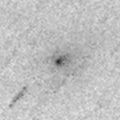
|
It brightened up to 15.4 mag in autumn (Nov. 19, Taras Prystavski). But it was extremely diffuse. It was reported so faint as 20 mag after December. It keeps observable in excellent condition in the Southern Hemisphere. But it locates low in the Northern Hemisphere.
Date(TT) R.A. (2000) Decl. Delta r Elong. m1 Best Time(A, h)
Mar. 21 8 21.73 -37 23.8 1.980 2.594 117 17.6 20:27 ( 0, 88)
Mar. 28 8 22.65 -36 35.8 2.072 2.652 114 17.8 20:01 ( 0, 88)
|
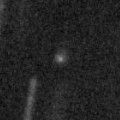
|
Now it is 17.7 mag (Feb. 24, K. Hills). It keeps observable at 17 mag from winter to spring. It is observable in excellent condition in the Southern Hemisphere. But it locates somewhat low in the Northern Hemisphere.
Date(TT) R.A. (2000) Decl. Delta r Elong. m1 Best Time(A, h)
Mar. 21 10 45.02 -29 46.5 2.216 3.088 145 17.6 22:49 (180, 85)
Mar. 28 10 35.36 -30 34.3 2.241 3.089 141 17.7 22:12 (180, 86)
|
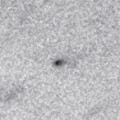
|
Now it is 17.6 mag (Jan. 21, Catalina Sky Survey). Now it is around the aphelion. In the Northern Hemisphere, it is observable at 18 mag in good condition from winter to spring. It locates somewhat low in the Southern Hemisphere.
Date(TT) R.A. (2000) Decl. Delta r Elong. m1 Best Time(A, h)
Mar. 21 8 30.87 29 14.7 3.935 4.547 122 17.7 20:37 (180, 26)
Mar. 28 8 29.78 29 6.5 4.018 4.536 115 17.7 20:08 (180, 26)
|
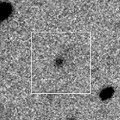
|
It will brighten up to 14 mag in 2016 spring. Now it is 16.9 mag (Feb. 19, W. Hasubick). In 2015, it is observable in good condition until spring in the Northern Hemisphere. In the Southern Hemisphere, it is not observable in 2015. But it will be observable in good condition at the high light in 2016.
Date(TT) R.A. (2000) Decl. Delta r Elong. m1 Best Time(A, h)
Mar. 21 7 15.51 38 42.8 3.584 3.957 104 17.7 19:35 (177, 16)
Mar. 28 7 16.93 38 11.4 3.627 3.901 98 17.7 19:24 (174, 17)
|

|
Now it is 16.6 mag (Feb. 20, Yasukazu Ikari). It keeps 18 mag from 2014 to 2015. In 2015, it keeps observable in good condition from winter to spring.
Date(TT) R.A. (2000) Decl. Delta r Elong. m1 Best Time(A, h)
Mar. 21 10 33.71 -10 59.1 5.101 6.025 156 17.8 22:39 (180, 66)
Mar. 28 10 31.09 -10 57.1 5.148 6.037 150 17.9 22:09 (180, 66)
|

|
First return of a peculiar asteroid 1998 HO121. It keeps observable at 17-18 mag from 2015 to 2016.
Date(TT) R.A. (2000) Decl. Delta r Elong. m1 Best Time(A, h)
Mar. 21 6 59.78 11 7.0 2.686 3.095 104 17.8 19:35 (170, 43)
Mar. 28 7 4.21 11 34.4 2.763 3.082 99 17.9 19:24 (166, 42)
|
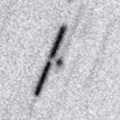
|
Now it is 17.7 mag (Feb. 14, Ken-ichi Kadota). It keeps observable at 18 mag from 2014 to 2015 in the Northern Hemispehre. It is not observable in the Southern Hemispehre.
Date(TT) R.A. (2000) Decl. Delta r Elong. m1 Best Time(A, h)
Mar. 21 14 35.60 69 45.7 3.985 4.361 105 17.9 2:44 (180,-15)
Mar. 28 14 9.46 71 35.7 4.022 4.369 103 17.9 1:51 (180,-16)
|
|
![]()
 C/2013 X1 ( PanSTARRS )
C/2013 X1 ( PanSTARRS ) 110P/Hartley 3
110P/Hartley 3 C/2013 V4 ( Catalina )
C/2013 V4 ( Catalina ) 70P/Kojima
70P/Kojima 116P/Wild 4
116P/Wild 4 201P/LONEOS
201P/LONEOS 17P/Holmes
17P/Holmes 57P/du Toit-Neujmin-Delporte
57P/du Toit-Neujmin-Delporte 269P/2012 R2 ( Jedicke )
269P/2012 R2 ( Jedicke ) C/2013 G9 ( Tenagra )
C/2013 G9 ( Tenagra ) P/2014 X1 ( Elenin )
P/2014 X1 ( Elenin ) C/2014 W2 ( PanSTARRS )
C/2014 W2 ( PanSTARRS ) 4P/Faye
4P/Faye C/2013 V5 ( Oukaimeden )
C/2013 V5 ( Oukaimeden ) 40P/Vaisala 1
40P/Vaisala 1 299P/2014 D2 ( Catalina-PanSTARRS )
299P/2014 D2 ( Catalina-PanSTARRS ) C/2012 K8 ( Lemmon )
C/2012 K8 ( Lemmon ) C/2013 G3 ( PanSTARRS )
C/2013 G3 ( PanSTARRS ) C/2013 U2 ( Holvorcem )
C/2013 U2 ( Holvorcem ) 53P/Van Biesbroeck
53P/Van Biesbroeck 10P/Tempel 2
10P/Tempel 2 C/2014 R4 ( Gibbs )
C/2014 R4 ( Gibbs ) C/2014 W6 ( Catalina )
C/2014 W6 ( Catalina ) 65P/Gunn
65P/Gunn C/2014 Y1 ( PanSTARRS )
C/2014 Y1 ( PanSTARRS ) C/2013 TW5 ( Spacewatch )
C/2013 TW5 ( Spacewatch ) (347449) 2012 TW236
(347449) 2012 TW236 C/2014 F2 ( Tenagra )
C/2014 F2 ( Tenagra )![]()





















































